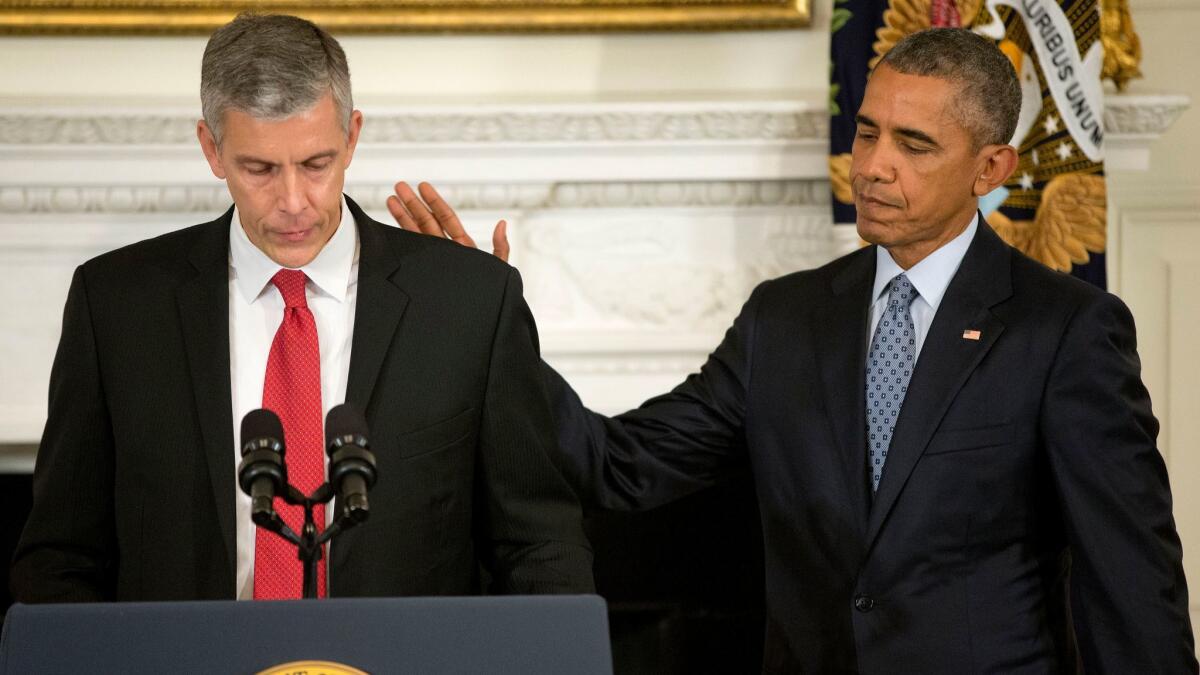Editorial: The School Improvement Grants that didn’t improve schools

- Share via
Another well-intended education program, another letdown. In the last hours of the Obama administration, the U.S. Department of Education released a report showing that billions of dollars in grants to low-performing schools hadn’t made a measurable difference for students.
The 2017 report wasn’t the first to find that School Improvement Grants weren’t bringing the expected changes, but it was the most definitive. “There were no significant impacts … on math or reading test scores, high school graduation, or college enrollment of students,” the 419-page report concluded.
The program was begun under the George W. Bush administration to help turn around the 5,000 lowest-performing schools in the country. It received a huge boost in 2009, when Congress included $3 billion for School Improvement Grants in the $831-billion economic stimulus package. Overall, about $7 billion has been spent on such grants.
Not only did the program never come close to expectations ... there’s no strong evidence that the educational practices it promoted are effective.
The Obama administration also made the grants more prescriptive. In order to win them, districts had to make one of four changes at the low-performing schools, such as replacing much of the staff or converting a traditional public school to a charter school. In addition, schools were required to overhaul teacher evaluations, lengthen instructional time and introduce more technology. Not only did the program never come close to expectations, the report commissioned by the Education Department found, but there’s no strong evidence that the educational practices it promoted are effective.
The grants are moot at this point; the school improvement program disappeared, along with the No Child Left Behind Act in 2016. And there are other funds that schools can use for turnarounds that are not subject to the restrictions imposed by the Obama administration.
But the failure of yet another education program has lessons that the next secretary of Education (who we hope is not Betsy DeVos, who displays an abysmal lack of knowledge about schools) should take into the future.
The educational reform landscape is littered with theories about what’s needed to improve low-performing schools. The Finnish model. The South Korean model. More money with more restrictions. More money with fewer restrictions.
The answers are seldom so simple. Even charter schools, which have given parents real choices in Los Angeles, have underperformed in many other areas. The nation needs education leaders who think big but move forward on their vision with caution, starting with pilot programs, nurturing the careful growth of successful ideas and continuously monitoring and correcting.
That wasn’t the style of former Secretary of Education Arne Duncan, whose brash confidence in his own school philosophies too often pushed schools into dead ends and required frustrating changes of direction. Implementing change with prudence and requiring evidence of success doesn’t seem like the style of the Trump administration, either. But it should try learning from the billions of dollars Duncan wasted.
Follow the Opinion section on Twitter @latimesopinion and Facebook
A cure for the common opinion
Get thought-provoking perspectives with our weekly newsletter.
You may occasionally receive promotional content from the Los Angeles Times.






